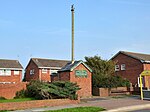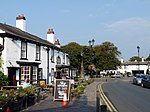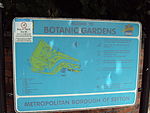Stanley High School, Southport
Academies in the Metropolitan Borough of SeftonBuildings and structures in SouthportNorth West England school stubsSecondary schools in the Metropolitan Borough of SeftonUse British English from February 2023

Stanley High School is a coeducational secondary school located in the resort town of Southport, Merseyside in North West England. It opened in 1952, with 300 pupils, and was named after Edward Stanley, 18th Earl of Derby. The school became a designated specialist Sports College in 2003, but in 2012 was renamed Stanley High School to celebrate the school's 60th anniversary. In 2016 the school was judged Inadequate by Ofsted and therefore became an academy in 2017. The school's academy sponsor is Southport Learning Trust. The school was rated Good following an Ofsted inspection in February 2020.
Excerpt from the Wikipedia article Stanley High School, Southport (License: CC BY-SA 3.0, Authors, Images).Stanley High School, Southport
Fleetwood Road,
Geographical coordinates (GPS) Address Phone number Website External links Nearby Places Show on map
Geographical coordinates (GPS)
| Latitude | Longitude |
|---|---|
| N 53.6695 ° | E -2.9751 ° |
Address
Stanley High School
Fleetwood Road
PR9 9TF , Marshside
England, United Kingdom
Open on Google Maps






